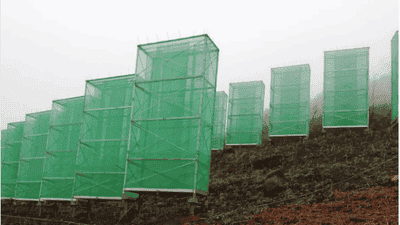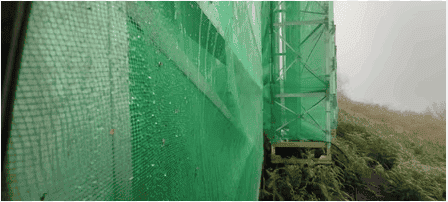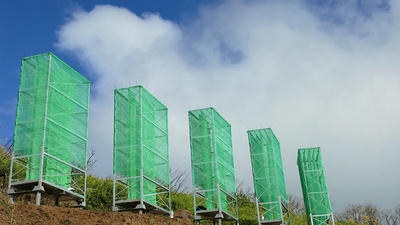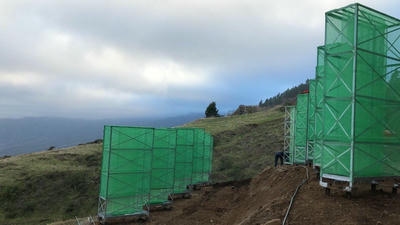
In an era when climate change and water scarcity pose significant challenges to agriculture and livelihoods, innovative solutions rooted in ancient practices are gaining renewed attention. One such method is fog harvesting, a sustainable technique that has been used for centuries in arid regions around the world. By capturing moisture from fog, communities can revitalize landscapes that have long suffered from drought and degradation.
Fog harvesting, also known as fog netting or fog collection, is the process of capturing water droplets from fog using mesh nets or other structures. As fog rolls in, tiny water droplets form on the surface of the nets and coalesce, eventually dripping down into collection containers. This method takes advantage of the natural phenomenon of fog formation, where water vapor condenses into liquid droplets in humid air, especially in coastal and mountainous regions.
Fog occurs when the air temperature drops to its dew point, causing humidity to condense into tiny water droplets suspended in the air. Factors influencing fog formation include:
Temperature and Humidity: Cool, moist air is crucial for fog formation. Coastal areas often experience this due to the interaction between ocean currents and atmospheric conditions.
Topography: Mountains and hills can trap moist air and create microclimates conducive to fog formation. The orographic effect, where moist air rises over mountains, cools, and condenses, often enhances fog occurrence.
Wind Patterns: Gentle winds can carry moisture-laden air into areas where fog nets are installed, increasing collection efficiency.

Fog harvesting has a long history, particularly in arid regions where conventional water sources are scarce. Some of the earliest known uses of fog collection techniques can be traced to:
Andean Cultures: Indigenous communities in the Andes mountains of Peru and Chile have used fog nets for centuries to extract water from coastal fog. This method has historically supported agriculture and livestock.
Desert Regions: In the Arabian Peninsula and northern Africa, fog harvesting has been utilized in nomadic cultures to secure a water supply in extremely arid environments.
European Adaptations: In the 20th century, fog harvesting techniques were adapted in places like the Canary Islands and parts of Portugal, showcasing the versatility of this method.
In recent years, interest in fog harvesting has surged due to its potential to address contemporary water scarcity issues. Climate change, urbanization, and population growth have intensified the need for sustainable water solutions. As a result, ancient techniques are being revitalized and adapted to meet the needs of modern communities.
A typical fog harvesting system consists of several key components:
Fog Nets: Made of fine mesh materials, fog nets are designed to maximize the surface area for fog droplets to accumulate. The mesh size should be optimized to capture droplets without allowing them to pass through.
Collection Troughs: Positioned beneath the fog nets, collection troughs guide the condensed droplets into storage containers. These troughs are often angled to enhance drainage and collection efficiency.
Storage Tanks: Captured water is stored in tanks for later use. These tanks must be water-tight and protected from contamination.
Supporting Structures: Fog harvesting systems often require supporting structures to hold the nets in place, which can be constructed from wood, metal, or other materials.
The installation of a fog harvesting system typically involves the following steps:
Site Selection: Choosing an appropriate site is crucial. Factors such as fog frequency, wind patterns, and topography should be assessed.
Construction: The nets are installed on supporting structures, with troughs placed beneath to catch the water.
Monitoring: Regular maintenance is essential to ensure the system operates effectively. This includes inspecting and cleaning the nets, checking for damage, and ensuring proper drainage.
Community Involvement: Successful fog harvesting projects often involve local communities in both the installation and maintenance processes, fostering a sense of ownership and responsibility.

The Atacama Desert, known as one of the driest places on Earth, has seen successful fog harvesting initiatives that provide crucial water resources for communities and agriculture.
Implementation: Local farmers have constructed fog nets in regions that experience consistent fog, particularly along the coastal mountain ranges.
Impact: These systems have significantly improved water availability for irrigation, enabling the cultivation of crops such as tomatoes and grapes, and supporting local economies.
In the Canary Islands, fog harvesting plays a vital role in sustaining local populations, particularly on the island of La Palma.
Technologies Used: Advanced fog nets have been installed in strategic locations to capture moisture from trade winds that bring humid air.
Outcomes: These systems have improved water supply for both domestic use and agriculture, reducing reliance on imported water and desalination methods.
In Morocco, communities in the coastal mountains have adopted fog harvesting to combat water scarcity in an area where traditional water sources are limited.
Community-Led Projects: Local cooperatives have played a significant role in establishing fog collection systems, engaging in training and capacity building.
Results: The initiative has led to increased agricultural productivity and improved livelihoods, empowering communities to manage their water resources sustainably.
Fog harvesting provides a sustainable water source that does not deplete local aquifers or surface water bodies. This is especially important in arid regions where water scarcity is a pressing issue. By capturing moisture directly from the atmosphere, fog harvesting helps to avoid excessive reliance on traditional water sources.
Restoring vegetation in areas where fog harvesting is implemented can lead to improved biodiversity and ecosystem health. Increased water availability encourages the growth of plants that play a vital role in soil stabilization and habitat creation for various species.
Fog harvesting serves as a climate adaptation strategy by providing a reliable water source in increasingly unpredictable weather patterns. As climate change leads to shifts in precipitation and temperature regimes, communities can better cope with the impacts of drought and water scarcity through fog harvesting initiatives.
Fog harvesting systems have a relatively low environmental impact compared to conventional water supply methods, such as groundwater extraction and desalination. Utilizing this ancient technique contributes to more sustainable water management and helps reduce the carbon footprint associated with water resource development.

Fog harvesting positively affects agricultural productivity in arid regions:
Increased Crop Yields: With additional water resources from fog harvesting, farmers can cultivate a wider variety of crops, leading to improved food security.
Diversification of Livelihoods: With increased water availability, communities can explore new agriculture-based economic activities, enhancing their resilience against market fluctuations.
Fog harvesting initiatives often empower local communities through:
Skill Development: Training programs associated with the installation and maintenance of fog harvesting systems provide valuable skills and knowledge to participants.
Collective Action: Successful implementation fosters collaboration among community members, promoting social cohesion and cooperation.
In many regions with a history of fog harvesting, the practice is culturally significant:
Cultural Heritage: Reviving and promoting traditional techniques can help preserve cultural identities and practices related to water management.
Intergenerational Knowledge Transfer: Engaging younger generations in fog harvesting fosters pride in local heritage and ensures the continuity of traditional knowledge.
Fog harvesting is inherently dependent on climatic conditions. Variability in fog occurrence can lead to inconsistent water yields. Areas that experience infrequent fog may find it challenging to sustain fog harvesting initiatives.
The setup costs for fog harvesting infrastructure can pose a barrier, particularly for low-income communities. While the long-term benefits are significant, communities may require external support to cover initial investment.
Ongoing maintenance is crucial for the success of fog harvesting systems. Lack of resources or knowledge may hinder effective upkeep, leading to decreased efficiency over time.
In some regions, fog harvesting initiatives may compete with other water supply solutions, such as groundwater extraction or rainwater harvesting. This competition can create conflicts over resource allocation.
Recent advancements in materials science have led to the development of more efficient and durable fog nets. Innovations in hydrophilic materials increase the surface area for water collection and enhance drainage capabilities.
Combining fog harvesting systems with renewable energy technologies can enhance their efficiency and sustainability. For instance, solar-powered pumps can be used to distribute collected water to agricultural fields or storage tanks.
The incorporation of data analytics and monitoring technologies enables communities to optimize their fog harvesting efforts. Sensors and meteorological devices can track fog conditions and improve collection efficiency.
Integrating fog harvesting with other water management strategies, such as rainwater harvesting or greywater reuse, can create hybrid systems that enhance overall water security.
To maximize the impact of fog harvesting, successful models from around the world should be scaled up and adapted to different contexts. Collaborative efforts between governments, NGOs, and local communities can promote the widespread adoption of fog harvesting techniques in arid regions globally.
To encourage the growth of fog harvesting initiatives, supportive policies and regulations should be established. Governments can offer incentives for adopting sustainable water management practices and promote research and innovation in this field.
Sustaining fog harvesting efforts will require ongoing community engagement and education programs. Empowering communities through knowledge sharing and participatory decision-making can foster resilience and ensure the longevity of fog harvesting systems.
Continued research into the science of fog collection and its socio-economic implications is essential. Academic institutions, governmental organizations, and NGOs should collaborate to explore new methodologies, materials, and approaches to enhance fog harvesting.
Fog harvesting is a testament to the power of ancient wisdom and sustainable practices in confronting modern challenges of water scarcity and environmental degradation. By revitalizing arid landscapes and enhancing food security, this ancient technique offers a viable solution for communities facing the impacts of climate change.
The successes of fog harvesting demonstrate its potential not only as a water source but also as a catalyst for social and environmental resilience. By integrating this practice with other sustainable water management strategies, fostering community involvement, and supporting policy advocacy, we can unlock the full potential of fog harvesting to transform arid landscapes around the world.
As we look to the future, the continued revival and innovation of fog harvesting techniques can contribute to a more sustainable and equitable world, where communities thrive even in the face of adversity.